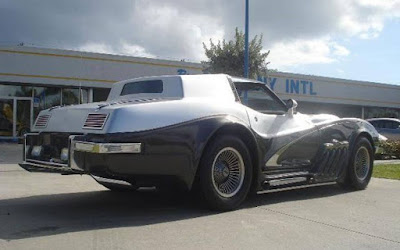Wait & See - Lotus Cars, the iconic British automaker, is once again making waves in the dynamic realm of automotive innovation. Following a strategic alliance with French automotive powerhouse Alpine, Lotus has unveiled the highly-anticipated successor to the beloved Elise – the Type 135. This collaboration has birthed a cutting-edge model that has captured the attention of enthusiasts and critics alike, sparking speculation about its potential as the rightful heir to the Lotus Elise.
 |
| The illustration Lotus Type 135 by Ben Summerell - Youde/Fox Syndicate. (Picture from: CarAndDriver) |
Breaking the silence shrouding this automotive venture, Mike Johnstone, the Lotus Group’s chief commercial officer, has revealed plans for the successor to the Elise, slated for a 2027 release. The sports car, currently in development under the codename Type 135 at Hethel, carries an estimated price tag of £75,000, generating significant buzz among automotive enthusiasts.
 |
| Electric successor to the Elise will be built and developed in Hethel, Norfolk. (Picture from: Carscoops) |
In a departure from its counterparts, the Emeya and Eletre, produced in China, Lotus is committed to manufacturing the Type 135 in England. With a global sales target of 10,000 to 15,000 units annually, Lotus aims to strengthen its ties to British automotive craftsmanship and establish a prominent presence in the international market.
 |
| The Lotus insiders say the Type 135 will use a single axial-flux motor producing up to 470 horsepower and driving the rear wheels. . (Picture from: BlackXperience) |
Beyond its projected production volume, the Type 135 signifies more than just a new model. It marks the end of an era for Lotus, signaling a strategic shift away from conventional engine models like the Emira. This transformation aligns with the brand's commitment to electric vehicles (EVs), representing a bold leap into the future of automotive technology.
The Type 135, a two-seater sports car, is set to utilize the Lightweight Electric Vehicle Architecture (LEVA), born from the collaboration between Lotus and Alpine. Despite the dissolution of this partnership, the chassis structure of the Type 135 promises to be 37 percent lighter than its predecessor, the Emira. However, this weight reduction might be offset by the introduction of a robust battery.
 |
| The Type 135 is a two-seater sports car, and set to utilize the Lightweight Electric Vehicle Architecture (LEVA), born from the collaboration between Lotus and Alpine.. (Picture from: TechRadar) |
Under the hood, the Type 135 offers a compelling choice between one- and two-motor powertrain variants, boasting impressive horsepower figures of 469 and 872, respectively. The adaptable platform supports both rear-wheel and all-wheel drive configurations, with Lotus contemplating the inclusion of a torque-vectoring AWD setup akin to the one found in the Evija.
While the performance figures may seem conservative compared to other Lotus EVs, such as the Emeya and Eletre, the Type 135 compensates with a diverse range of battery options. Reports suggest a 66.4 kWh battery for approximately 300 miles and a more substantial 99.6 kWh battery providing an extended range of about 450 miles. Departing from the conventional under-floor placement, Lotus has ingeniously stacked the battery behind the driver, ensuring a classic sports car experience.
 |
| The Type 135 version will be the lightest and simplest—two classic Lotus qualities. (Picture from: Autocar) |
Ben Payne, Lotus Vice President of Design, affirms the project's momentum, emphasizing the meticulous approach to design. Striking a balance between honoring the brand's heritage and integrating necessary advancements, the commitment to innovation is palpable in the exploration of various design elements and considerations.
As Lotus embraces the electric future, the nomenclature of their new EV diverges from iconic names like Elise, Elan, and Esprit. This intentional departure acknowledges that the transition to EVs necessitates a fresh identity, signaling a departure from the past without severing ties with loyal customers. The Type 135 emerges as more than a successor; it symbolizes evolution and adaptation, embodying Lotus's commitment to progress.
 In conclusion, Lotus embarks on a transformative journey into the electric frontier, bidding farewell to the echoes of traditional combustion engines. The Type 135 stands as a beacon of change, seamlessly blending innovation with heritage, challenging preconceived notions in the ever-evolving automotive landscape. As the curtains rise on this new chapter, Lotus remains at the forefront, poised to redefine the future with an electric revolution echoing the spirit of their iconic past. *** [EKA | FROM VARIOUS SOURCES | LOTUS CARS | AUTOCAR | CARANDDRIVER | ID.MOTOR1 | CARSCOOPS | TECHRADAR ]
In conclusion, Lotus embarks on a transformative journey into the electric frontier, bidding farewell to the echoes of traditional combustion engines. The Type 135 stands as a beacon of change, seamlessly blending innovation with heritage, challenging preconceived notions in the ever-evolving automotive landscape. As the curtains rise on this new chapter, Lotus remains at the forefront, poised to redefine the future with an electric revolution echoing the spirit of their iconic past. *** [EKA | FROM VARIOUS SOURCES | LOTUS CARS | AUTOCAR | CARANDDRIVER | ID.MOTOR1 | CARSCOOPS | TECHRADAR ]Note: This blog can be accessed via your smart phone.






































